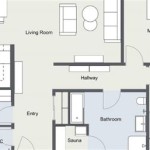A Bat House Plan is a set of instructions and materials used to construct a bat house, an artificial structure designed to provide shelter for bats, such as the common evening bat (Nycticeius humeralis) and the big brown bat (Eptesicus fuscus). Bat houses are often erected in areas where natural roosting sites are scarce, such as in urban or suburban environments.
The design of a Bat House Plan typically includes specifications for the dimensions, shape, and materials of the house, as well as instructions for its placement and maintenance. Bat houses are typically made of wood or plastic and are designed to mimic natural roosting sites, providing a dark, warm, and humid environment for bats to rest and raise their young.
In the following sections, we will explore the key components of a Bat House Plan, discuss the benefits of installing bat houses, and provide step-by-step instructions for constructing and placing a bat house.
When designing and constructing a bat house, there are several key factors to consider to ensure its effectiveness and attractiveness to bats.
- Size and shape
- Materials
- Entrance design
- Placement
- Height
- Orientation
- Maintenance
- Monitoring
- Safety
By carefully considering these factors, you can create a bat house that will provide a suitable and long-lasting home for these beneficial creatures.
Size and shape
The size and shape of a bat house are important factors to consider, as they affect the house’s ability to attract and accommodate bats. The ideal size for a bat house will vary depending on the species of bats you are trying to attract. Smaller species, such as the little brown bat (Myotis lucifugus) and the Yuma myotis (Myotis yumanensis), require smaller houses, while larger species, such as the Mexican free-tailed bat (Tadarida brasiliensis) and the evening bat (Nycticeius humeralis), require larger houses.
In general, a bat house should be at least 12 inches tall and 8 inches wide, with a depth of 3-4 inches. The entrance hole should be at least 3/4 inch in diameter, and it should be placed near the bottom of the house. The house should also have a rough interior surface to provide bats with a place to grip.
The shape of the bat house is also important. Bats prefer houses that are tall and narrow, rather than wide and short. This is because tall, narrow houses provide bats with a greater surface area to roost on, and they also help to create a more humid environment inside the house.
Finally, the color of the bat house is also important. Bats prefer houses that are dark in color, such as brown or black. This is because dark colors absorb heat from the sun, which helps to keep the house warm inside.
Materials
The materials used to construct a bat house are also important, as they affect the house’s durability, longevity, and ability to attract bats. The best materials to use for a bat house are those that are durable, waterproof, and insulating. Some of the most popular materials used for bat houses include:
- Wood
Wood is a good choice for bat houses because it is durable, waterproof, and insulating. However, it is important to choose a type of wood that is resistant to rot and decay, such as cedar, redwood, or cypress. Wood bat houses should also be painted or stained to protect them from the elements.
- Plastic
Plastic is another good choice for bat houses because it is durable, waterproof, and easy to clean. However, it is important to choose a type of plastic that is UV-resistant, as plastic can become brittle and break down in the sun. Plastic bat houses should also be vented to prevent the house from overheating.
- Metal
Metal is not as commonly used for bat houses as wood or plastic, but it can be a good choice if you are looking for a durable and long-lasting house. However, it is important to choose a type of metal that is rust-resistant, such as aluminum or galvanized steel. Metal bat houses should also be insulated to prevent the house from getting too hot or too cold.
- Other materials
There are a variety of other materials that can be used to construct bat houses, such as recycled materials, straw bales, and even gourds. However, it is important to choose materials that are durable, waterproof, and insulating, and that will not harm bats.
When choosing materials for a bat house, it is also important to consider the climate in your area. If you live in a cold climate, you will need to choose materials that will insulate the house and keep bats warm. If you live in a warm climate, you will need to choose materials that will ventilate the house and keep bats cool.
Entrance design
The entrance design of a bat house is one of the most important factors to consider, as it affects the house’s ability to attract and accommodate bats. The entrance should be large enough to allow bats to enter and exit the house easily, but it should not be so large that predators can enter the house and harm the bats.
The ideal size for a bat house entrance hole is 3/4 inch in diameter. This size is large enough for most species of bats to enter and exit the house easily, but it is too small for most predators to enter.
The entrance hole should be placed near the bottom of the house, and it should face away from the prevailing wind. This will help to keep the house warm and dry inside.
In addition to the size and placement of the entrance hole, the design of the entrance is also important. The entrance should be smooth and free of any sharp edges that could injure bats. The entrance should also be sloped downward, so that bats can easily enter and exit the house.
By carefully considering the design of the entrance, you can create a bat house that is attractive to bats and that provides them with a safe and comfortable place to roost.
Placement
The placement of a bat house is one of the most important factors to consider, as it affects the house’s ability to attract and accommodate bats. The house should be placed in a location that is protected from the elements, but that also receives some sunlight. The house should also be placed high enough off the ground to deter predators, but not so high that bats cannot reach it.
Here are some tips for choosing a good location for a bat house:
- Choose a sunny location. Bats prefer to roost in warm places, so choose a location that receives some sunlight during the day. The house should not be placed in direct sunlight, as this can cause the house to overheat.
- Choose a sheltered location. The house should be protected from the wind and rain. Do not place the house in a location that is exposed to strong winds or heavy rains.
- Choose a location that is high off the ground. The house should be placed at least 10 feet off the ground to deter predators. However, the house should not be placed so high that bats cannot reach it.
- Choose a location that is near a water source. Bats need water to drink and to bathe. Choose a location that is near a pond, stream, or other water source.
By carefully considering the placement of the bat house, you can create a home for bats that is attractive, safe, and comfortable.
Height
The height of a bat house is an important factor to consider, as it affects the house’s ability to attract and accommodate bats. The house should be placed high enough off the ground to deter predators, but not so high that bats cannot reach it.
- 10-15 feet is the ideal height for a bat house.
This height is high enough to deter most predators, but it is also low enough for bats to reach. If you place the house higher than 15 feet, bats may have difficulty reaching it.
- The house should be placed at least 3 feet above any vegetation.
This will help to keep the house dry and free of debris. It will also make it easier for bats to find the house.
- The house should be placed in a location that is open and unobstructed.
This will allow bats to easily fly in and out of the house. Avoid placing the house in a location that is surrounded by trees or other obstacles.
- If you are placing the house on a pole, make sure that the pole is sturdy and that it is at least 10 feet tall.
The pole should also be placed in a location that is protected from the wind.
By carefully considering the height of the bat house, you can create a home for bats that is attractive, safe, and comfortable.
Orientation
The orientation of a bat house is an important factor to consider, as it affects the house’s ability to attract and accommodate bats. The house should be oriented so that the entrance faces southeast or southwest. This will allow the house to receive some sunlight during the day, which will help to keep the house warm inside. The house should not be placed in a location that is exposed to strong winds or heavy rains.
In addition to the orientation of the house, the orientation of the entrance is also important. The entrance should be placed at the bottom of the house, and it should face away from the prevailing wind. This will help to keep the house warm and dry inside.
By carefully considering the orientation of the bat house, you can create a home for bats that is attractive, safe, and comfortable.
Additional details to consider:
- The house should be placed in a location that is protected from the elements.
This means that the house should be placed in a location that is not exposed to strong winds or heavy rains. The house should also be placed in a location that is not prone to flooding.
- The house should be placed in a location that is near a food source.
Bats need to eat insects to survive. Therefore, the house should be placed in a location that is near a source of insects, such as a pond, stream, or forest.
- The house should be placed in a location that is free of predators.
Bats are preyed upon by a variety of animals, including owls, hawks, and snakes. Therefore, the house should be placed in a location that is free of these predators.
By carefully considering all of these factors, you can create a bat house that is attractive, safe, and comfortable for bats.
Maintenance
Once you have installed a bat house, it is important to maintain it regularly to ensure that it remains in good condition and that it continues to attract bats. Here are some tips for maintaining a bat house:
- Inspect the house regularly.
Inspect the house for any signs of damage, such as cracks, holes, or missing parts. Repair any damage promptly to prevent the house from becoming unusable.
- Clean the house once a year.
Remove any bat guano or other debris from the house. This will help to keep the house clean and sanitary, and it will also help to prevent the spread of diseases.
- Repaint the house every few years.
Repainting the house will help to protect it from the elements and will also help to keep it looking its best. Use a dark-colored paint, such as brown or black, to help the house absorb heat from the sun.
- Monitor the house for activity.
Keep an eye on the house to see if bats are using it. If you see bats flying in and out of the house, it is a sign that the house is being used. If you do not see any activity, you may need to relocate the house to a more suitable location.
By following these tips, you can help to ensure that your bat house remains in good condition and that it continues to attract bats for many years to come.
Monitoring
Once you have installed a bat house, it is important to monitor it regularly to ensure that it is being used by bats and that it is in good condition.
- Check for signs of activity.
The most obvious sign of activity is seeing bats flying in and out of the house. You can also look for bat guano or other signs of bat activity around the house.
- Count the number of bats using the house.
If you see bats using the house, you can try to count them to get an estimate of how many bats are using the house. This can be done by watching the house at dusk or dawn when bats are most active.
- Inspect the house for damage.
Regularly inspect the house for any signs of damage, such as cracks, holes, or missing parts. Repair any damage promptly to prevent the house from becoming unusable.
- Clean the house if necessary.
If the house becomes heavily soiled with bat guano or other debris, you may need to clean it. However, it is important to avoid cleaning the house too often, as this can disturb the bats.
By monitoring your bat house regularly, you can help to ensure that it remains in good condition and that it continues to attract bats for many years to come.
Safety
When working with bats or bat houses, it is important to take precautions to ensure your safety. Here are some safety tips to keep in mind:
- Wear gloves when handling bats or bat houses.
Bats can carry diseases that can be transmitted to humans, so it is important to wear gloves when handling them or their houses. If you are bitten or scratched by a bat, seek medical attention immediately.
- Do not disturb bats during the day.
Bats are nocturnal animals, and they need to rest during the day. Disturbing bats during the day can cause them stress and make them more likely to bite or scratch. If you need to inspect or clean a bat house, do so at dusk or dawn when bats are less active.
- Do not seal up bat houses during the summer.
Bats use bat houses to raise their young, and sealing up a bat house during the summer can trap and kill the bats inside. If you need to seal up a bat house, do so in the fall or winter when bats are not using it.
- Be aware of predators.
Bats are preyed upon by a variety of animals, including owls, hawks, and snakes. When placing a bat house, choose a location that is not easily accessible to predators.
By following these safety tips, you can help to ensure your safety and the safety of the bats that use your bat house.









Related Posts








